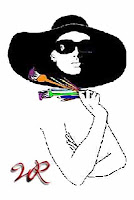Due to a question asked me on Twitter, I've refreshed and republished this post. This article was also posted on the 4RV Publishing Blog.on 12/09/12
So, you've decided you want a unique book cover for your book. You don't want it to look like every other book on the shelf or web browser.
You hop on Twitter or Facebook and put some feelers out, searching for a cover artist or designer. You get dozens and dozens of responses, from both amateurs and professionals. How do you know you are going to get what you want and that it's unique?
First you must learn a few key terms.
Designers are trained in typesetting, photo-manipulation, and composition. Though rare, some designers are also trained photographers and/or traditional artists. It's accepted, once an image is altered it is a 'new work', and by law, that is true. All it takes are three distinct changes. If you are looking for something more original than manipulated parts of stock photos that could potentially be used on another book cover, be sure to tell the cover designer you are not interested in using stock imagery. A cover designer may or may not be trained for what you are looking for.
In years past, publishers hired a cover artist to do the visual artwork and a cover designer to do the typesetting and layout. In today's tough job market, more and more designers are doing both the cover image (see above) and the design under one job. On that same note, more and more illustrators or cover artists are tackling the job of design. It is prudent to verify, before trusting your book to anyone that the person you hire is trained and skilled to do what you want for your cover. After all, your cover will be the first impression potential readers will have.
Many designers and websites that boast cheap 'custom' cover designs or art can be misleading. Again, let's look at the laws regarding art. By law, if an image (art or design), is altered in three ways, it is a new work. If an artist or designer manipulates two images by combining a figure from one and changing the color of something from another, all they have to do is add text. By law, that is a custom cover. That may be acceptable to you. Designs like this tend to be a cost-effective way to dress a book. However, some authors want a more detailed, more story-relevant cover, that does not include mixing existing stock imagery. If you are in that group, be sure to hire someone who insures the art is original, not simply custom. You'll likely pay more, but as the old saying goes, you get what you pay for.
How do you recognize the difference between cover art and cover design when looking through portfolios?
A cover artwork should be able to stand alone and still tell a story. A design, though it may look awesome and fitting with the title and cover text, if presented alone it would just be a cool visual. Does the portfolio use photographs? And if so, were they taken by the designer or a photographer they hired? Or, if you are looking for artwork, does the artist also do the design aspect of the cover. How well does their design compliment the art?
These are all questions that should be answered before money changes hands.
If anybody has questions as to what is considered original vs custom, or the difference between cover design & cover art, please leave comment or contact me at my signature links.
Onto wrapping up the next book ![]()
Until next time ...
Aidana WillowRaven
This post edited by Grammarly*
*Blurbs and quotes provided are not edited by WillowRaven, but posted as provided by author/publisher.








Comments